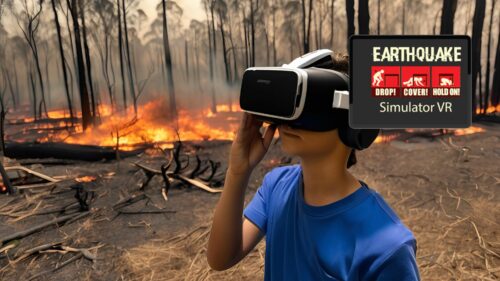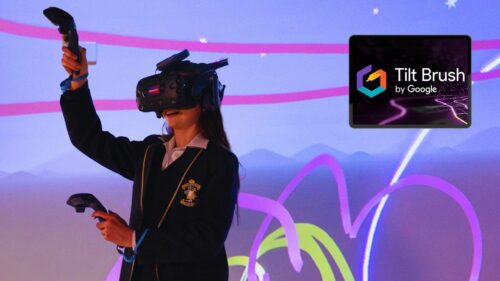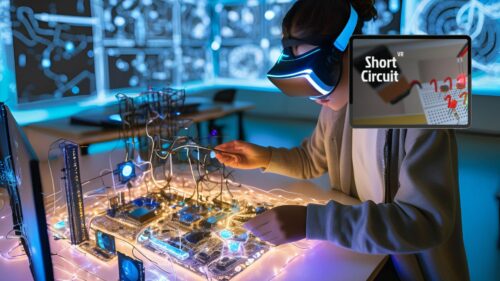Task Summary
Students will observe and analyse zoo animals in their natural habitats, through the use of Handheld VR devices, reflecting on their surroundings/needs. They will then plan and create their own sustainable zoo using CoSpaces.
Learn MorePreparation
Reminders
- All hardware has been charged and sanitised.
- Student Devices have the most recent updated version of CoSpaces installed.
- View VR videos to ensure the content is appropriate to your site and cohort of students.
- Experiment with Block Coding in CoSpaces to be able to lead students through on-screen instructions.
Tasks
- View the Teaching Deck – Animals in their Environments and adjust to best suit your context.
- Distribute QR codes either digitally or by printing the codes.
- Digitally assign Student Journal – Animals in their Environments, or alternatively print the resource.
- Divide students into pairs or groups (depending on how many devices are available).
Learning Sequence
Introduction
- Open up the Teaching Deck – Animals in their Environments and talk through the learning intentions for this lesson on slide 2.
- Discuss the following questions with students:
- What do you think this little cow needs to survive?
- Where do you think it would like to live?
- Reveal the main 5 needs as water, food, oxygen, space and shelter (slide 3).
- Explain today’s plan/goal (slide 4).
Explanation of Stations:
- Introduce the four stations students will engage in by reading the on-screen prompts in the Teaching Deck (slide 5)
- Read through the more detailed station guides with students to explain each station. Students will also have a copy of this in their Student Journal – Animals in their Environments for reference:
- HHVR – 360’ Youtube videos (slides 8 – 11)
- Students will scan a variety of QR codes provided to them to observe animals in their natural habitat. They will answer 4 reflection questions in their Student Journal about what they discovered.
- Augmented Digital Creation – 360’ Zoo (slide 12)
- Students are to follow the steps provided to remix a zoo template on CoSpaces. They will independently design their own zoo by inserting animals, and relating objects, from the library.
- Teacher Led – Block Coding with CoSpaces (slide 13)
- Students will follow their teacher’s lead to learn how to Block Code on CoSpaces. Teacher can provide coding challenges (i.e. make your animal walk around the borders of their enclosure), or allow students to code their animals freely.
- *Depending on students’ experience in coding, this station may need to be heavily scaffolded for students so please ensure educators are ready to lead this lesson.
- Research/Reflection – Needs of Living Things (slide 14 – 15)
- Students will use this station to reflect on their learning, or prior knowledge if it is their first station. They will also utilise this time to conduct some research about their animal’s needs and habitats.
- HHVR – 360’ Youtube videos (slides 8 – 11)
Development
- Display rotation schedule (slide 6). If the lesson is conducted over 2 separate
60 minute lessons, explain to students that they will partake in two stations today, and the remaining two stations during the next session. - Run through a quick VR safety reminder (slide 7).
- Allocate a station per group and send students off to get organised.
- Inform students that their Student Journals will also have the station explanations, as well as any links or workbooks, required.
- Allow 15-20 min interval rotations with adequate transition time.
- Ensure all students have begun engaging with their tasks before beginning to guide the Block Coding station.
- Give students a 2minute warning before transitioning to their next station.
- At the end of the final rotation, ask students to collaboratively pack up their station and return resources accordingly.
Conclusion
- *Students may require additional lessons to complete their zoo creations or finish coding more items.
- Gather students together and complete the task reflection (found in Teaching Deck slide 16), verbally as a group.
- Inform students that when their zoos are completed, they will be able to share their creation with peers and can view their creation via the HHVR devices.



